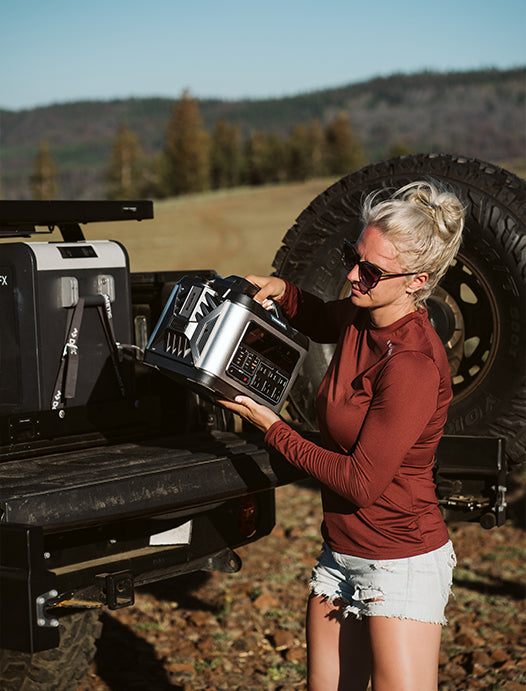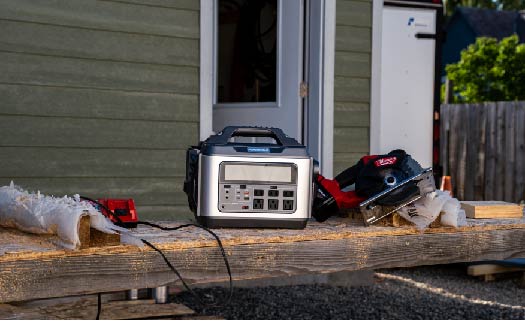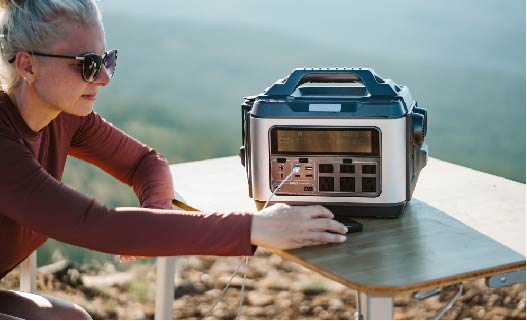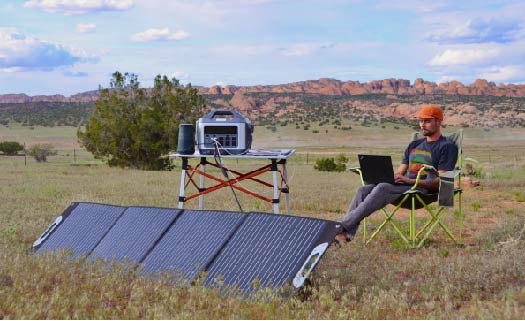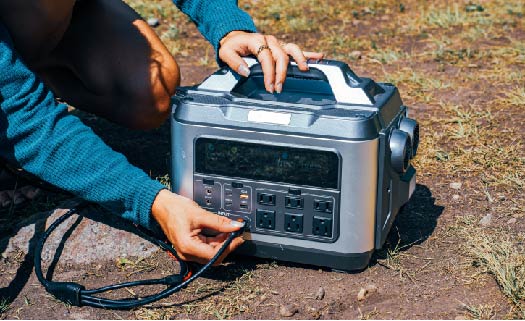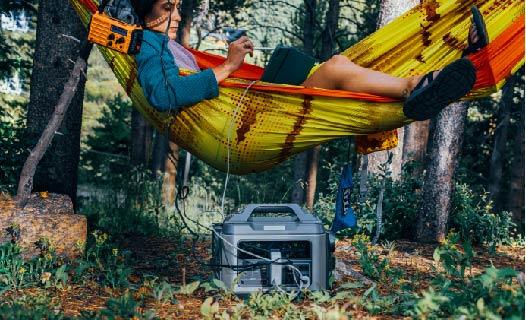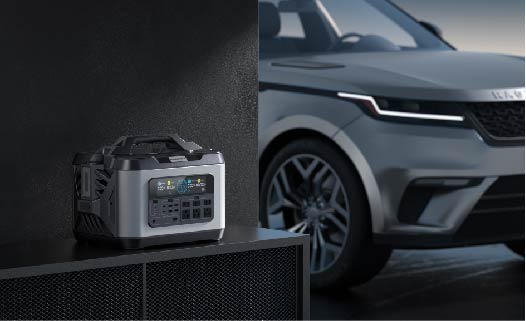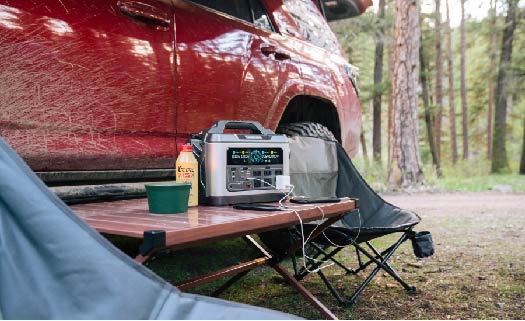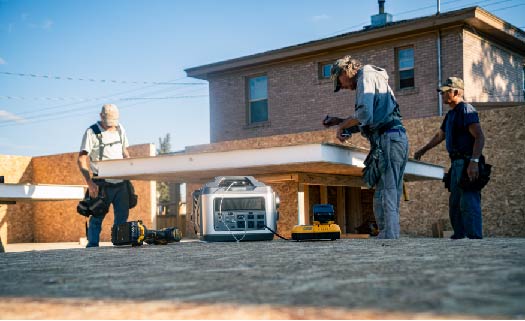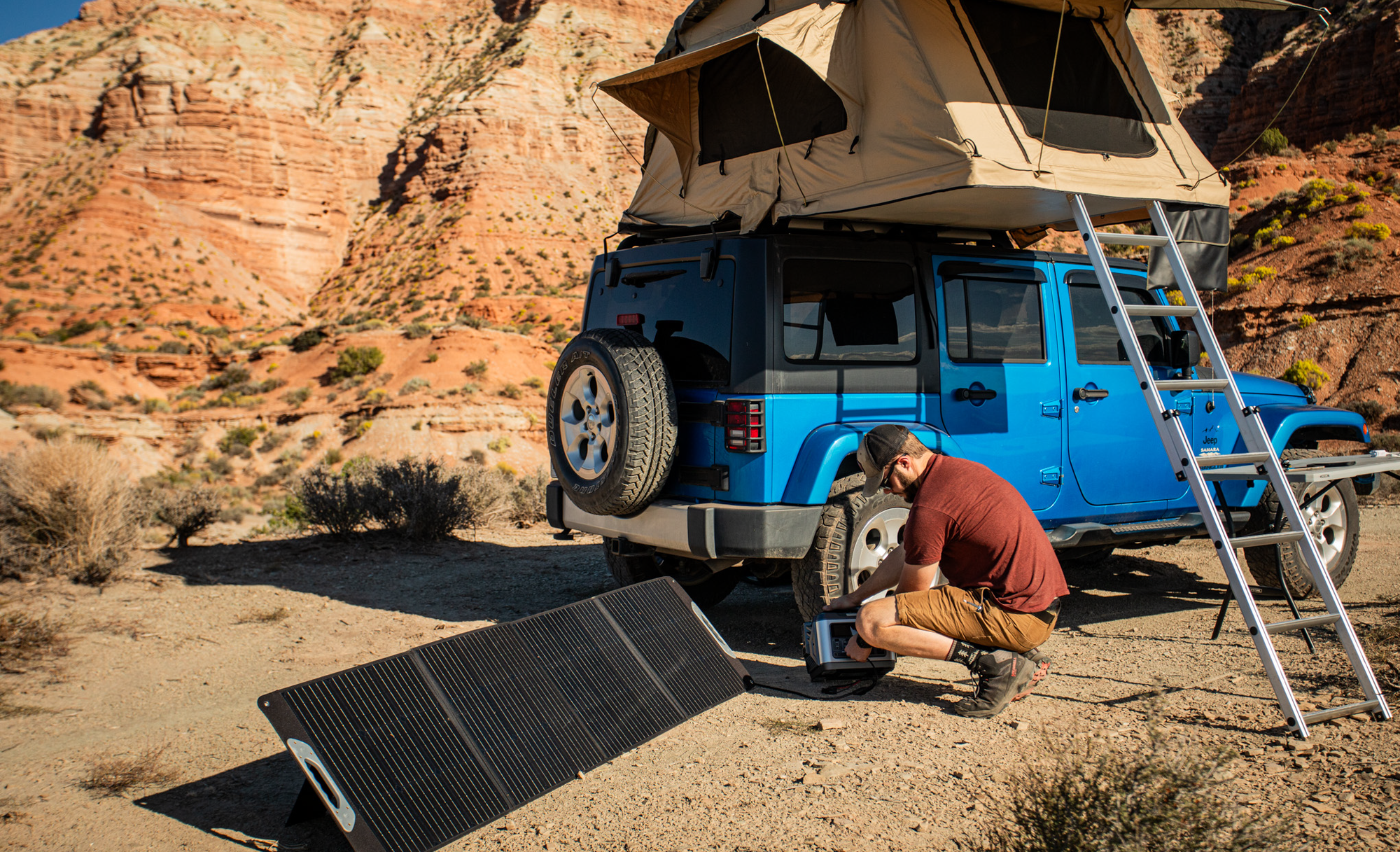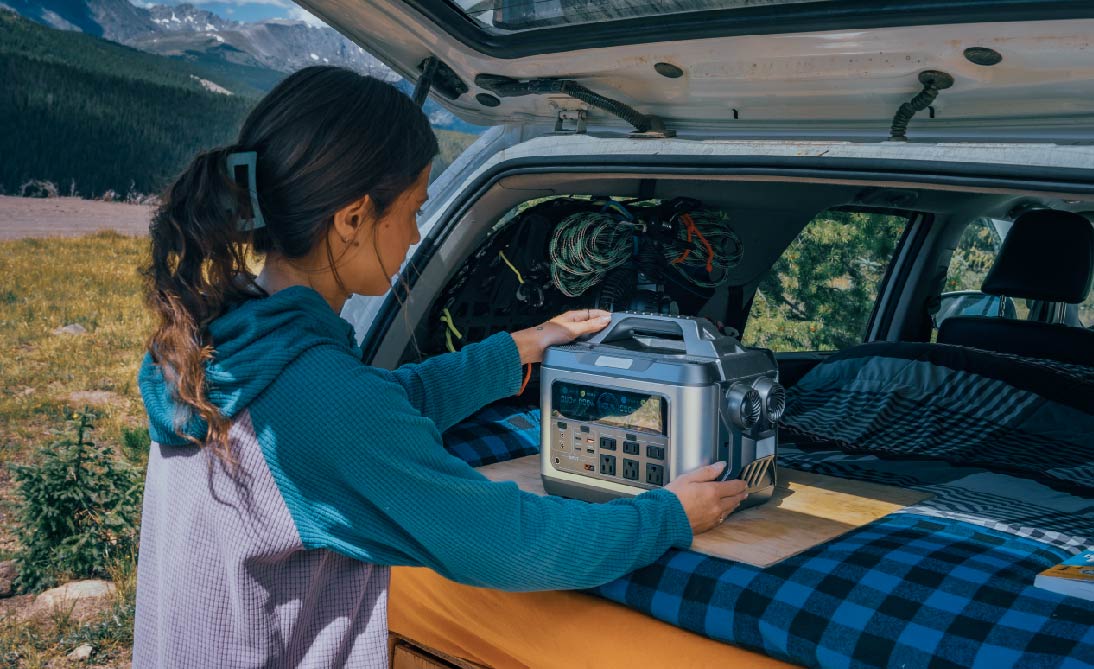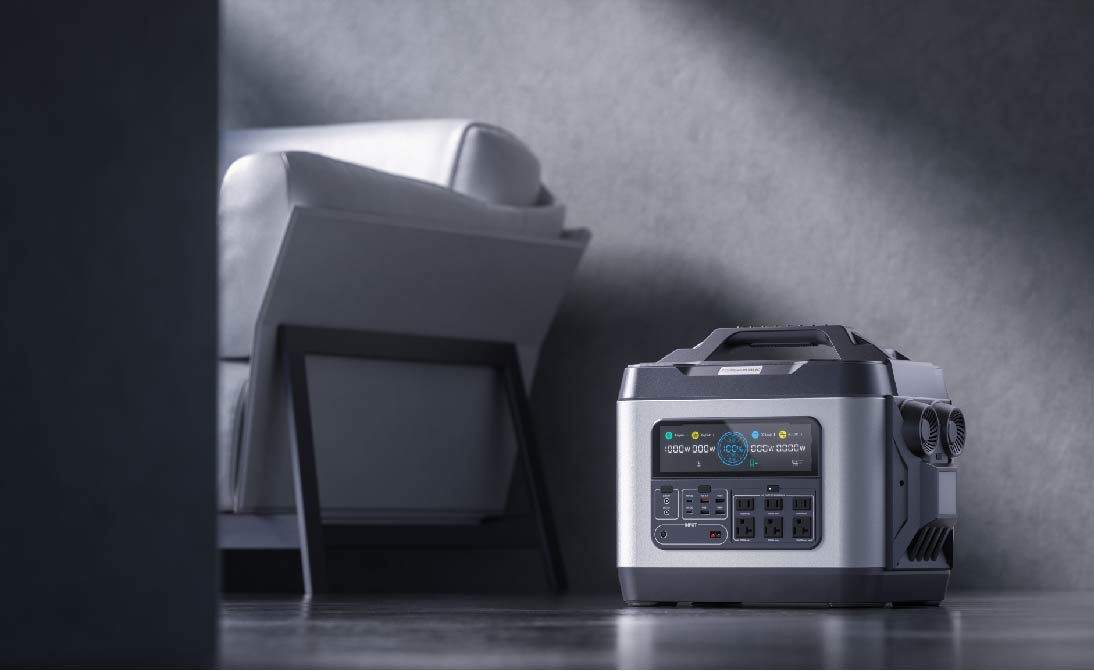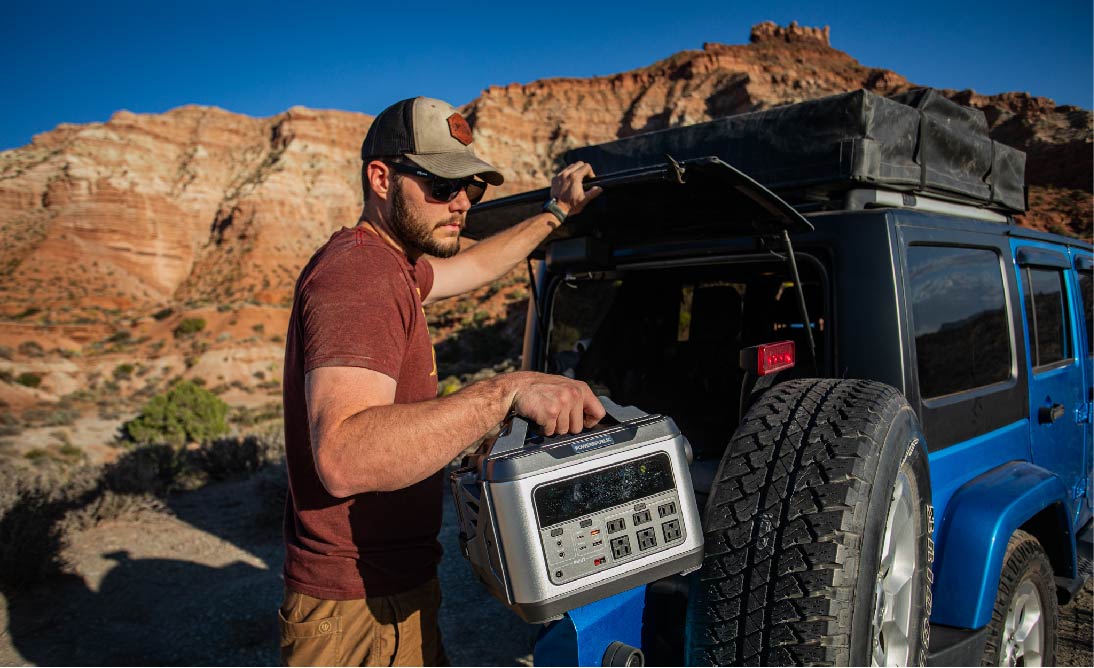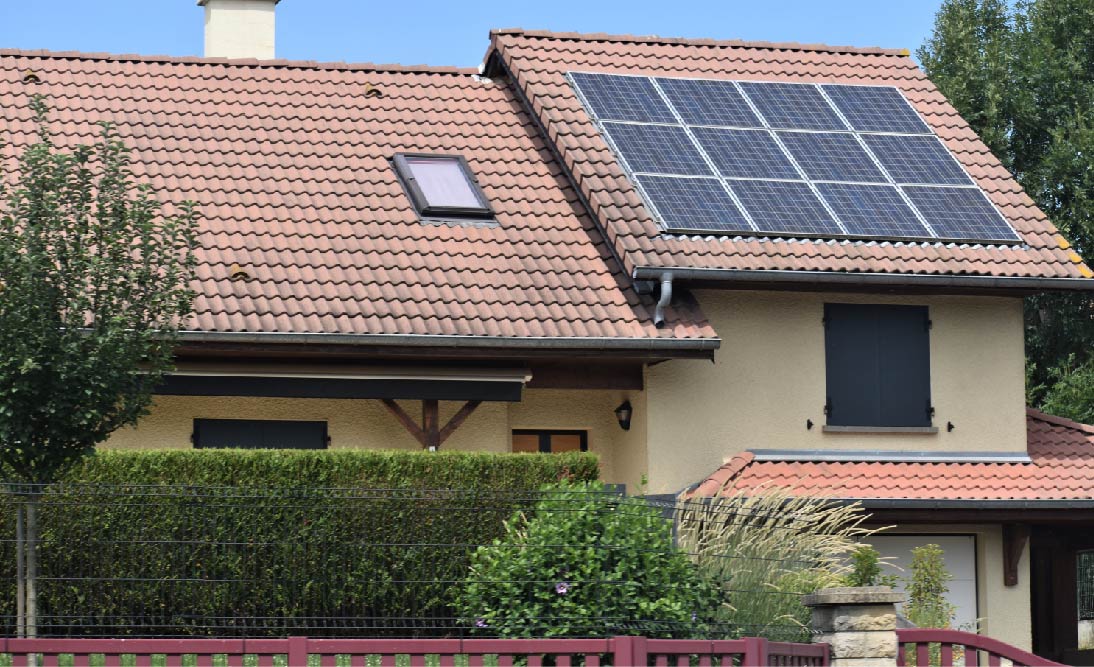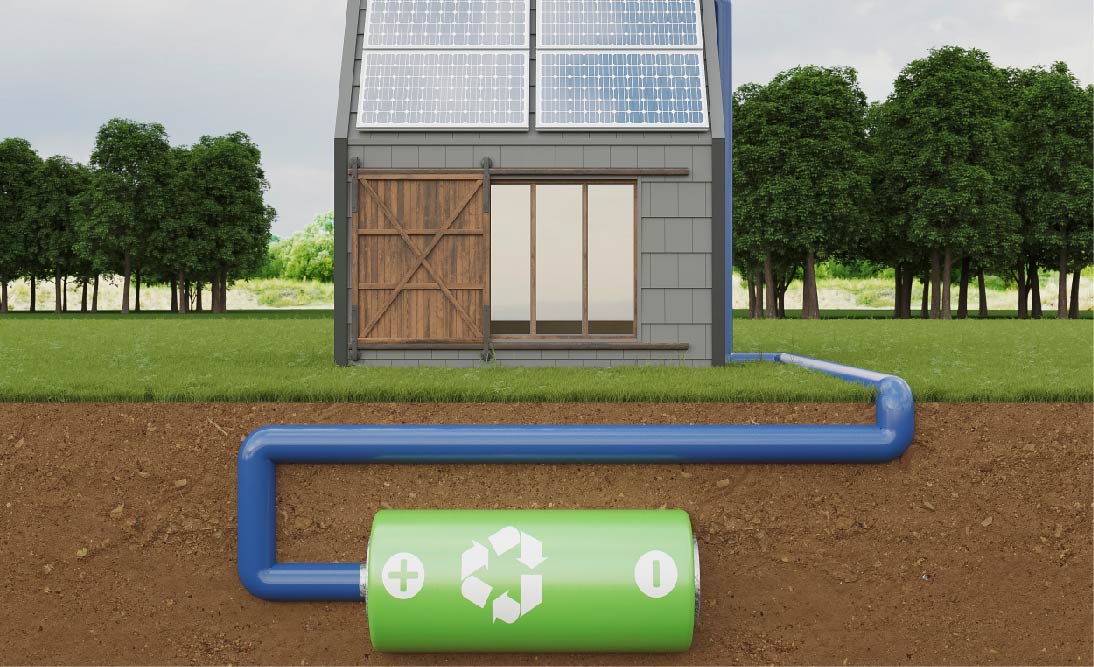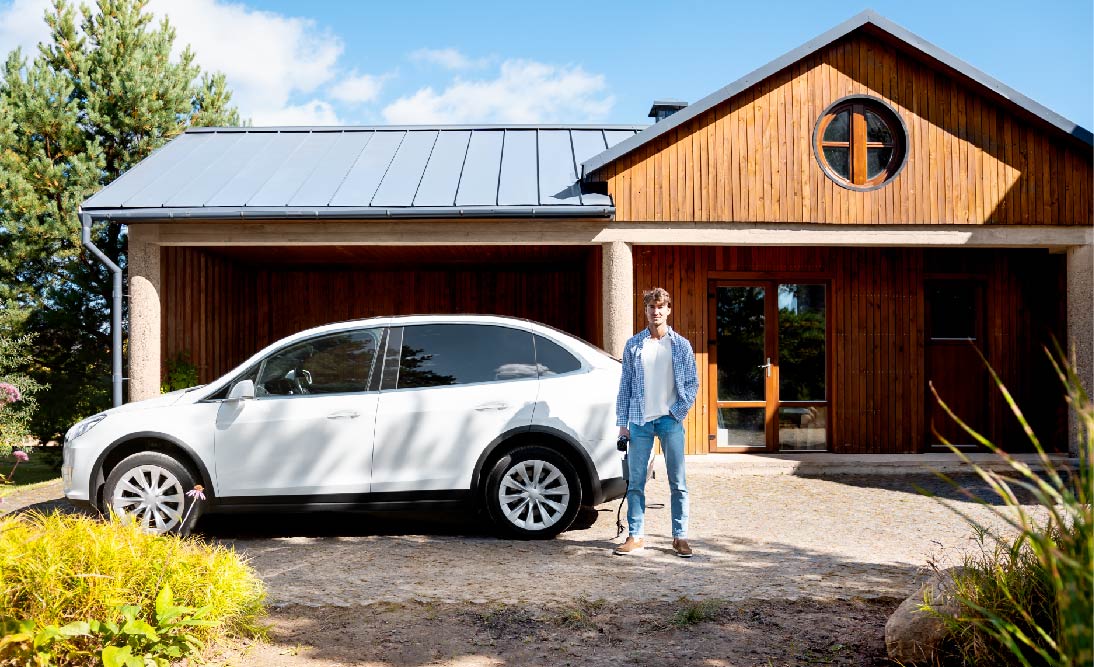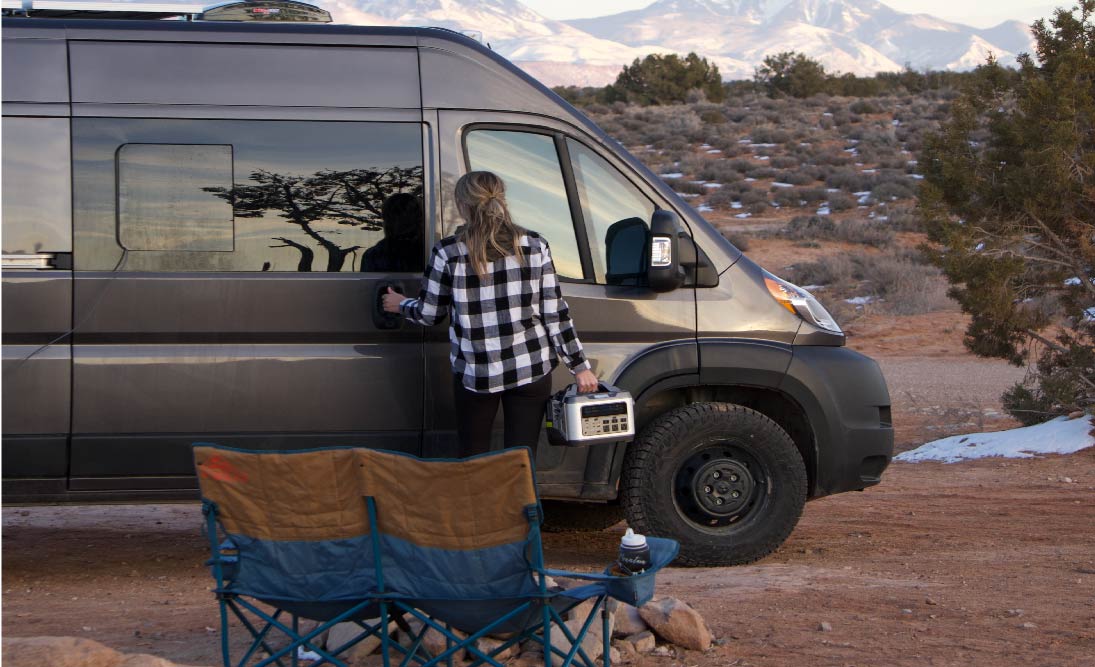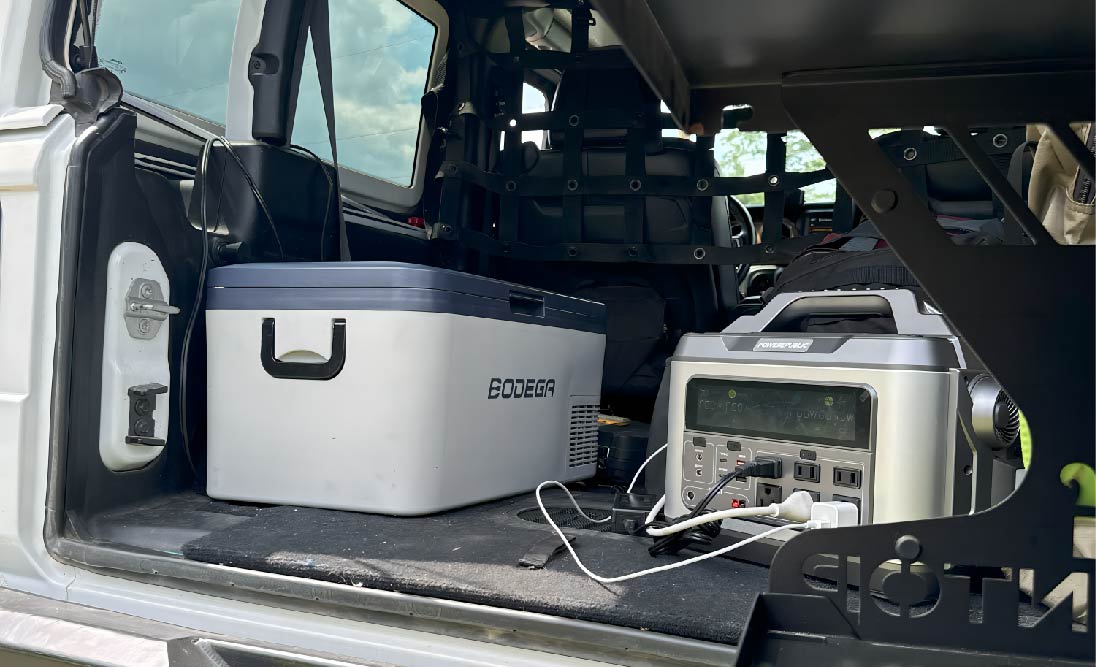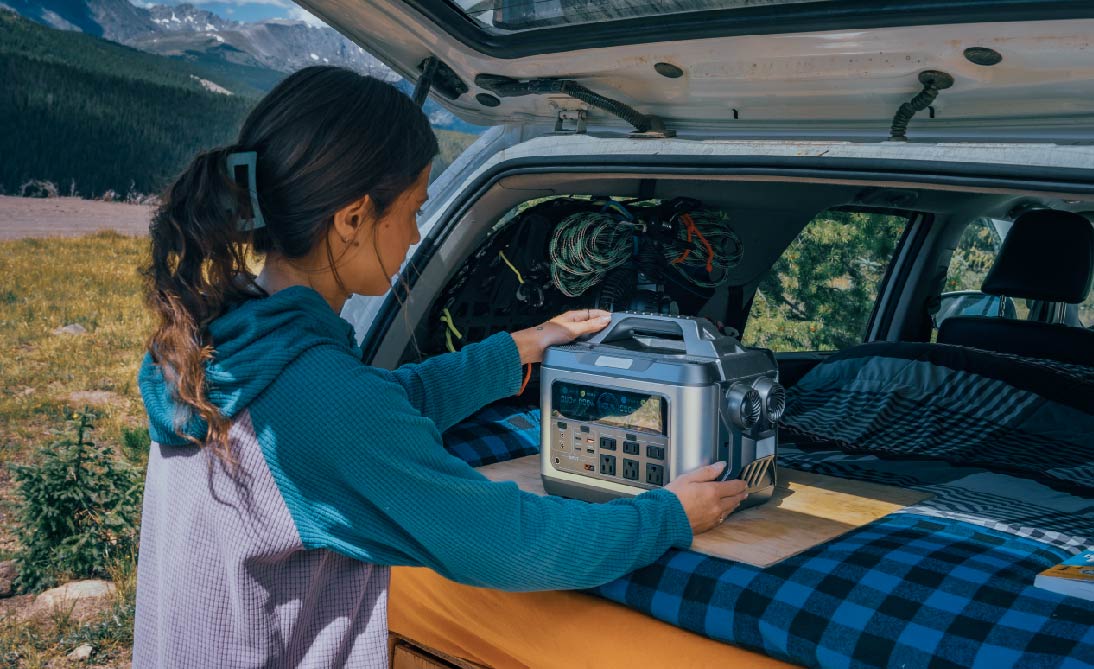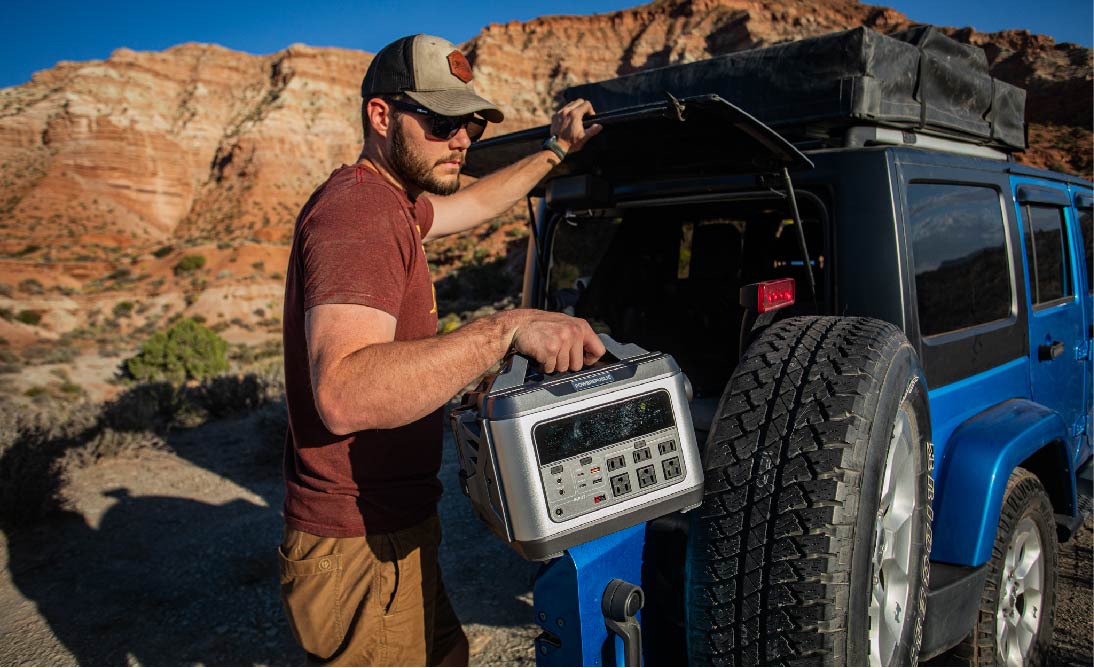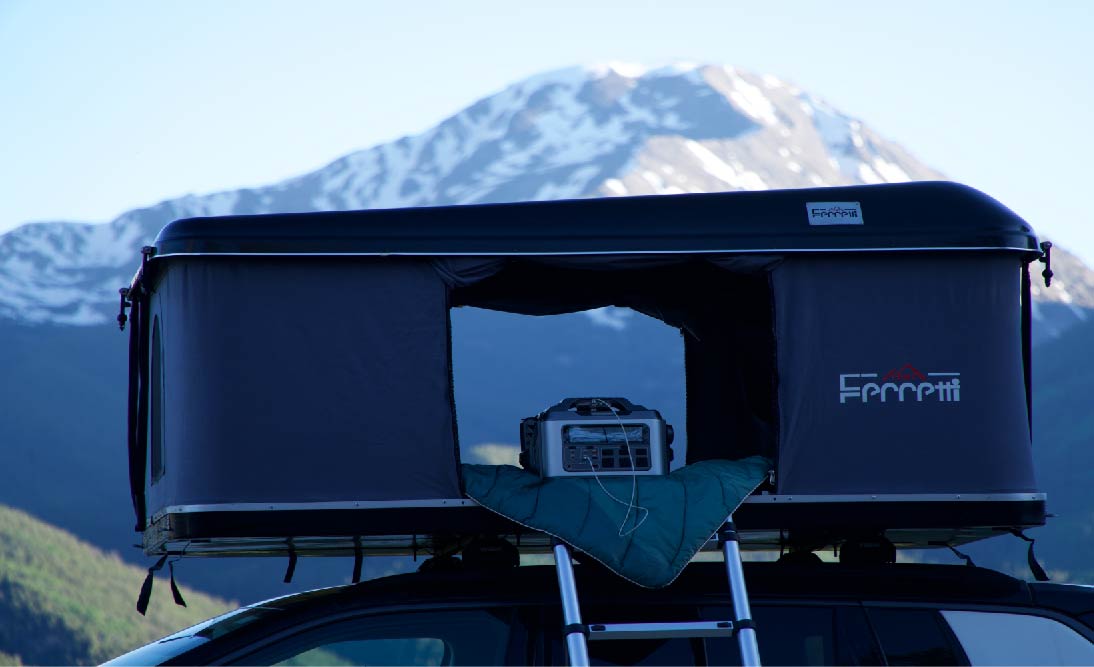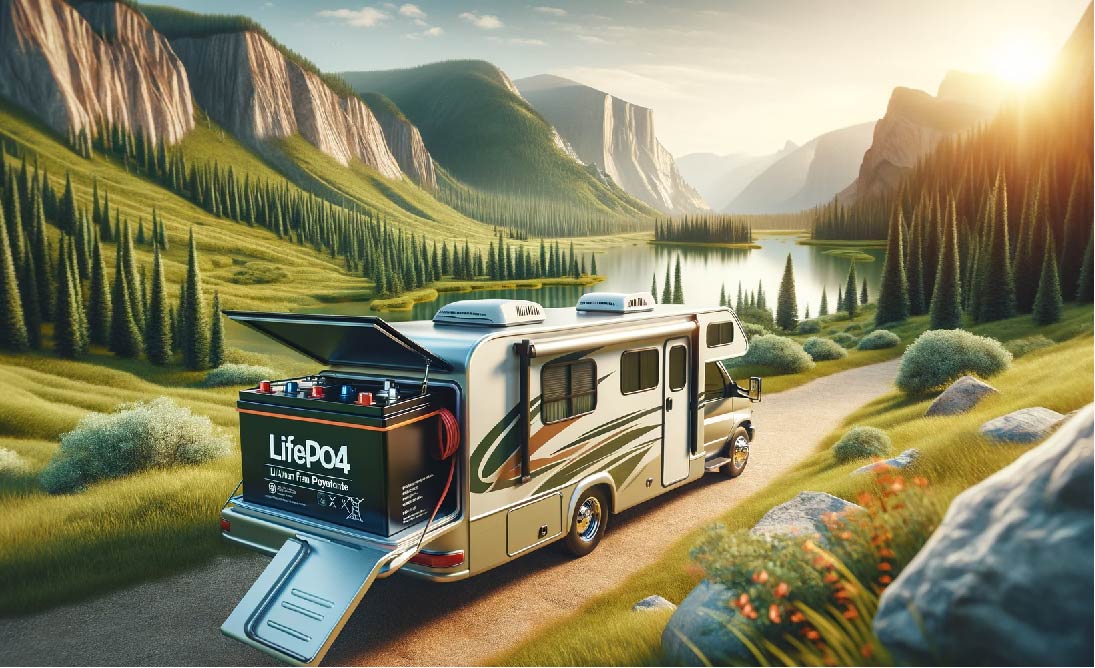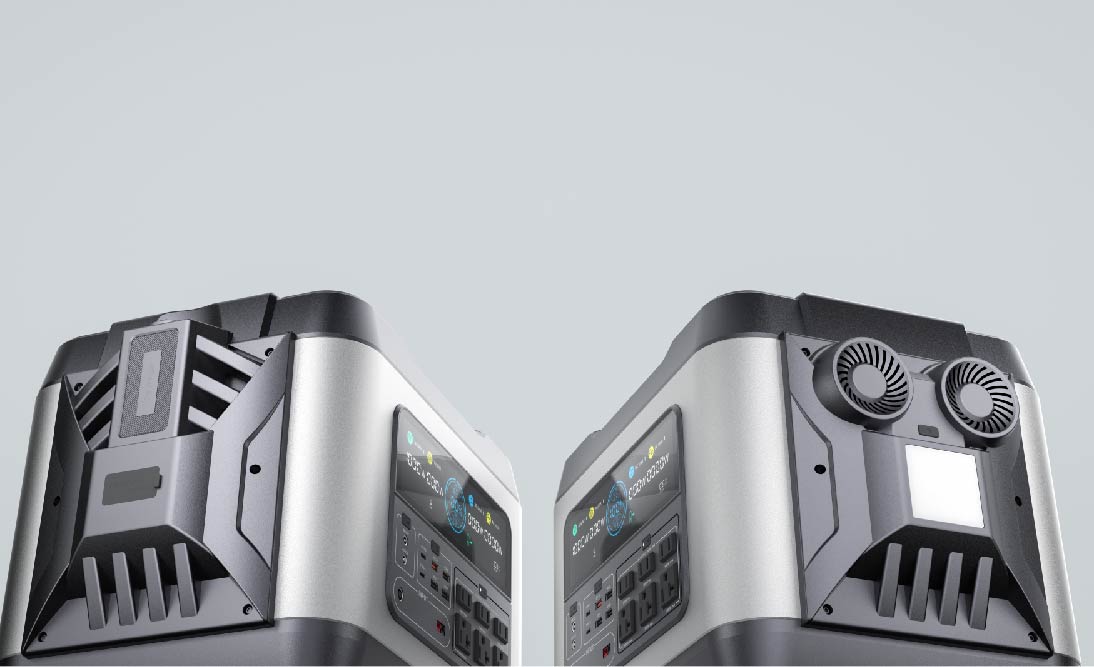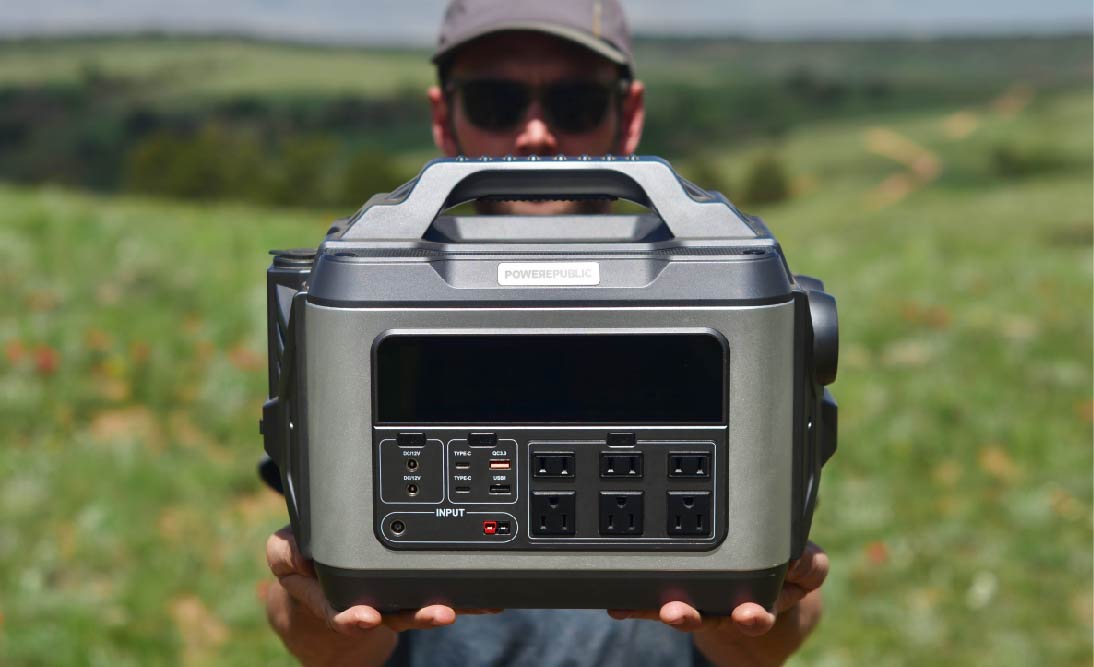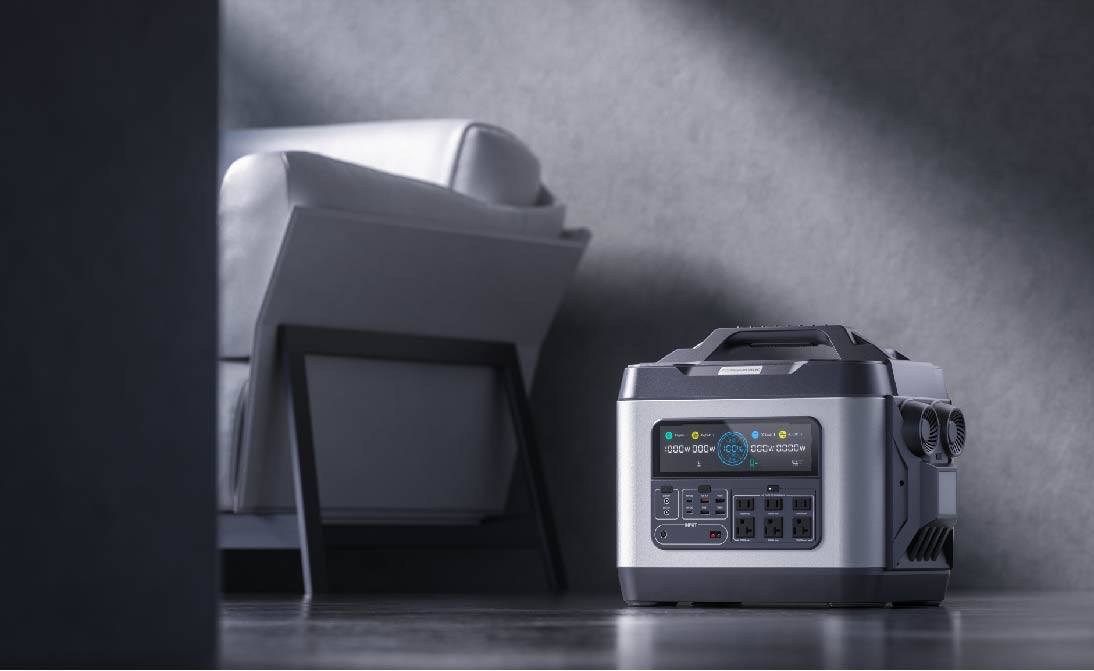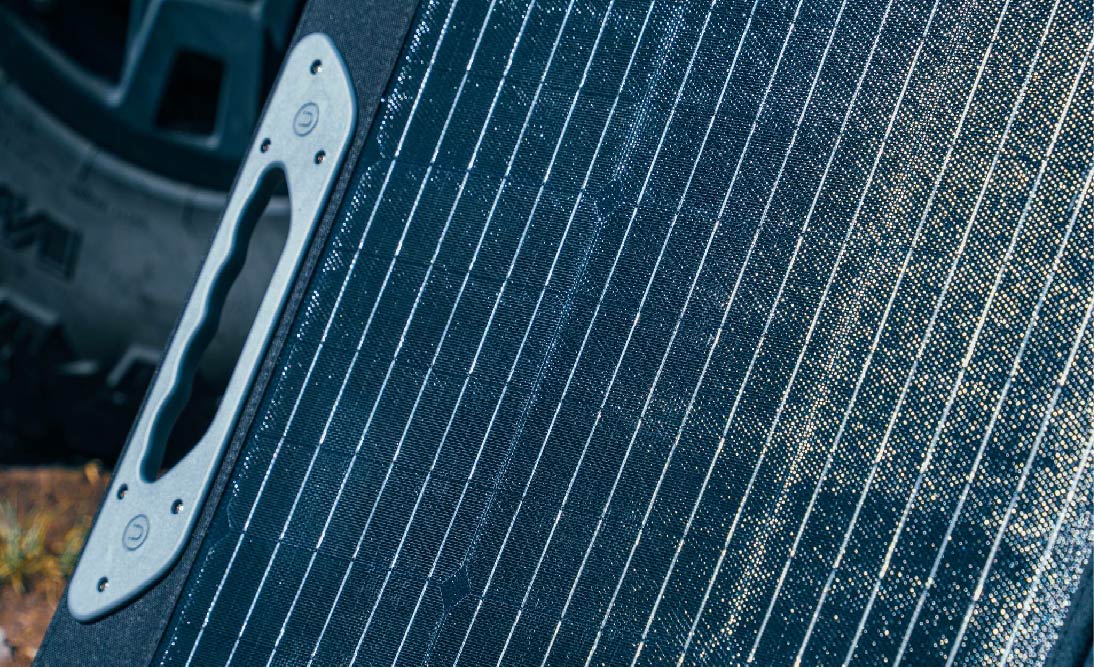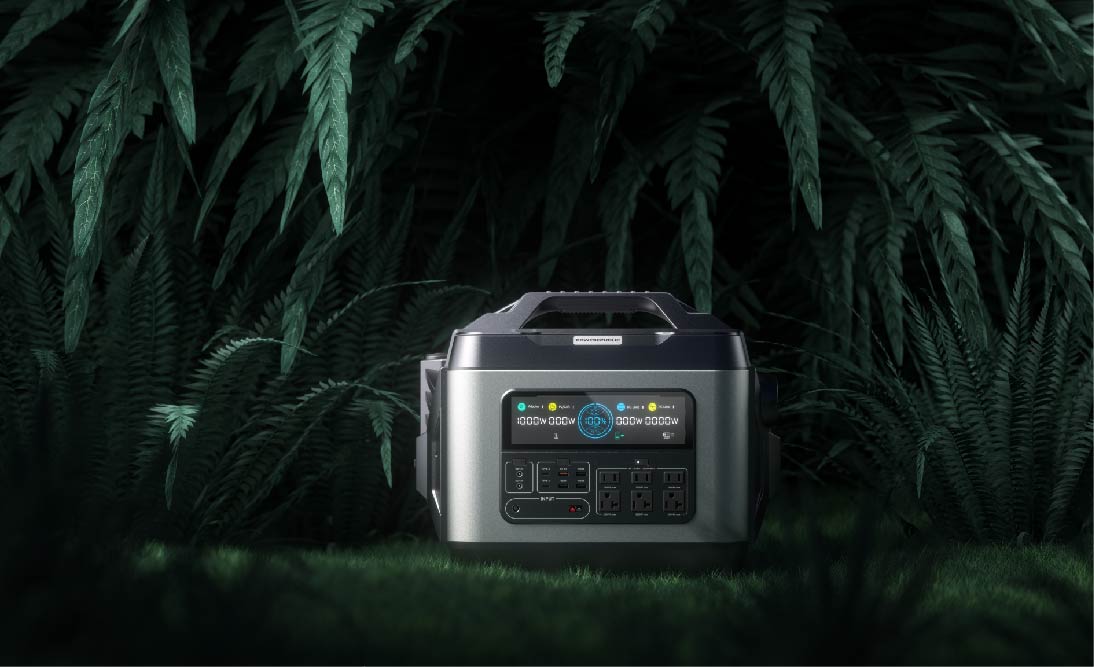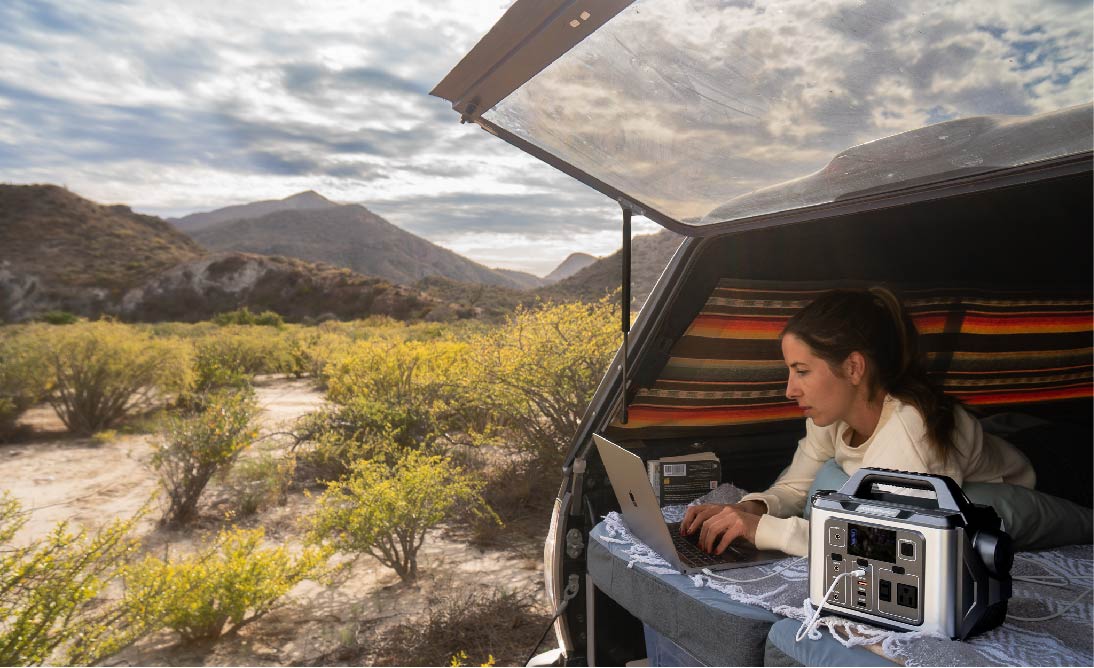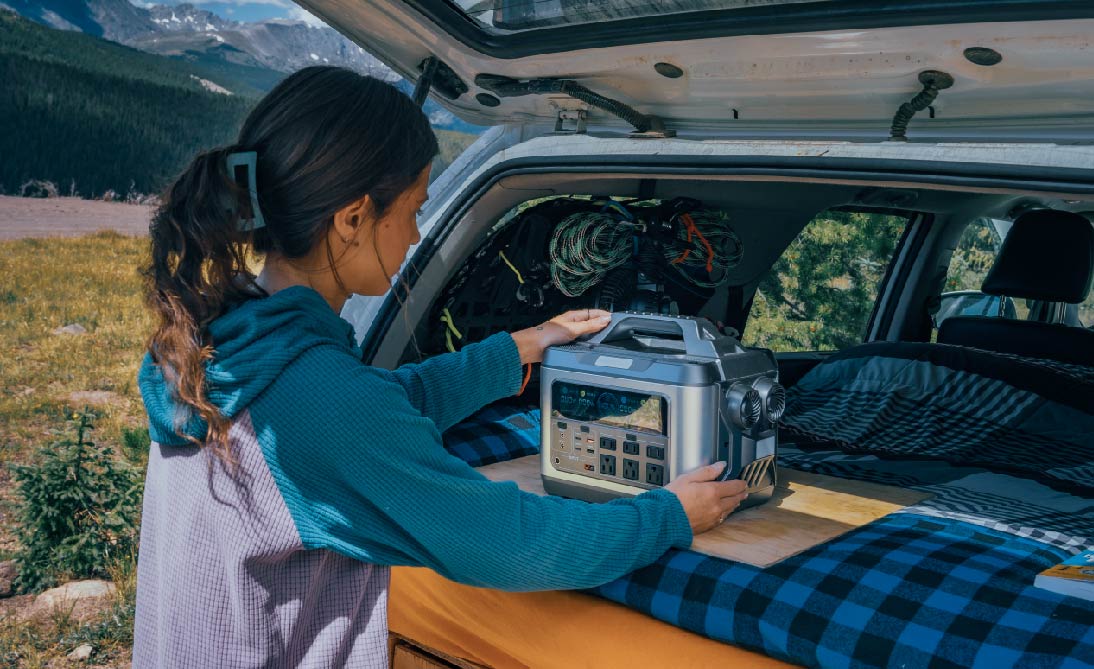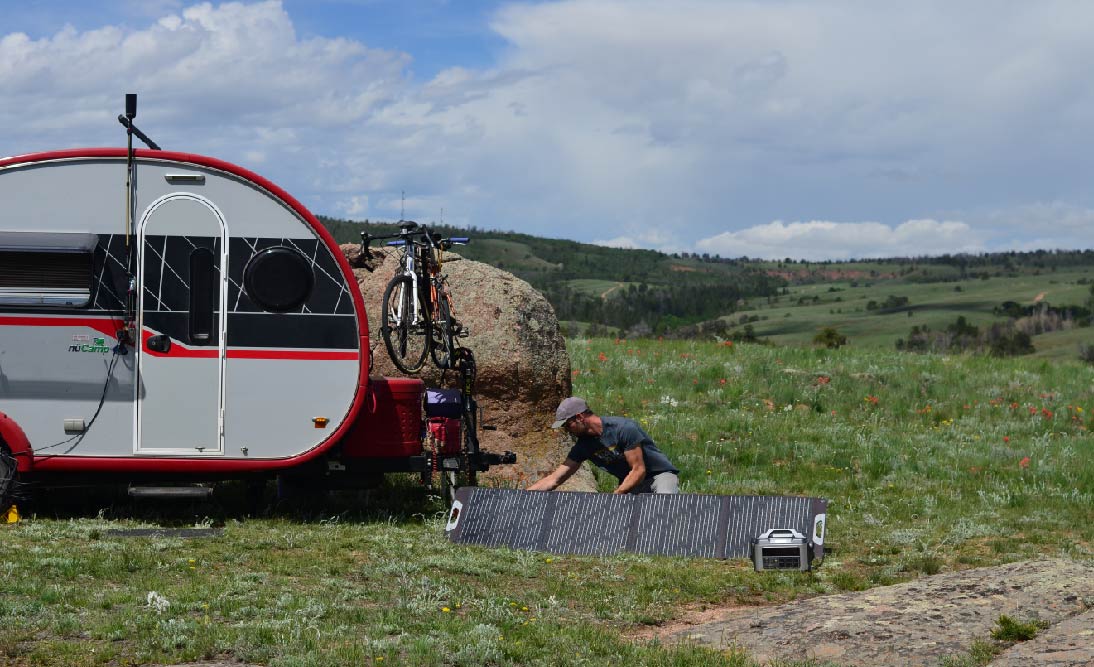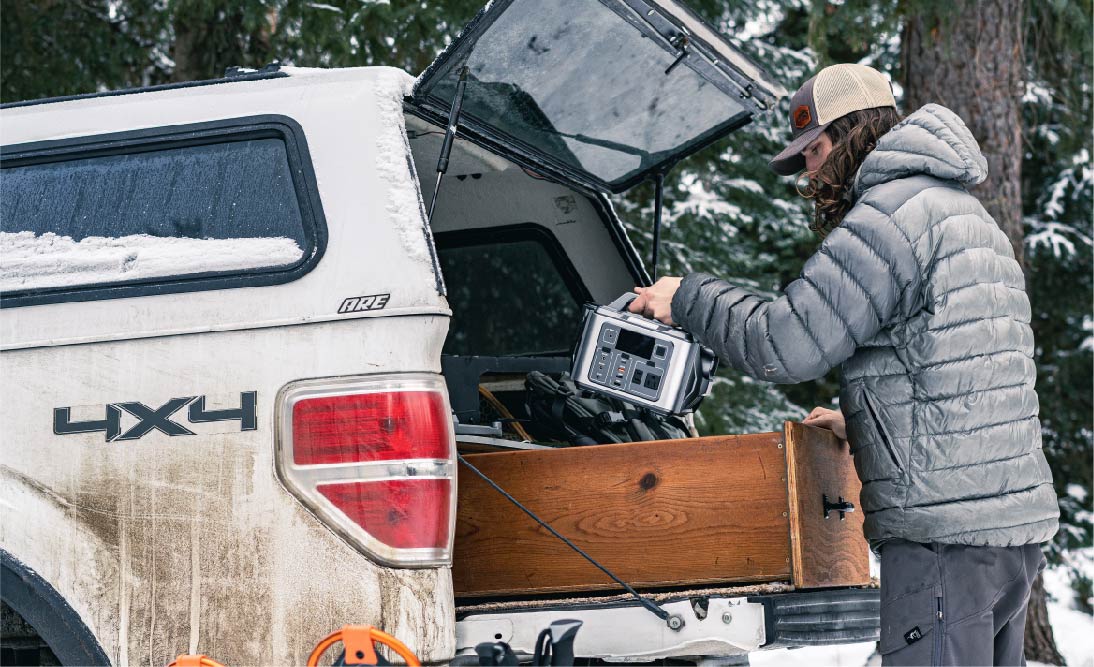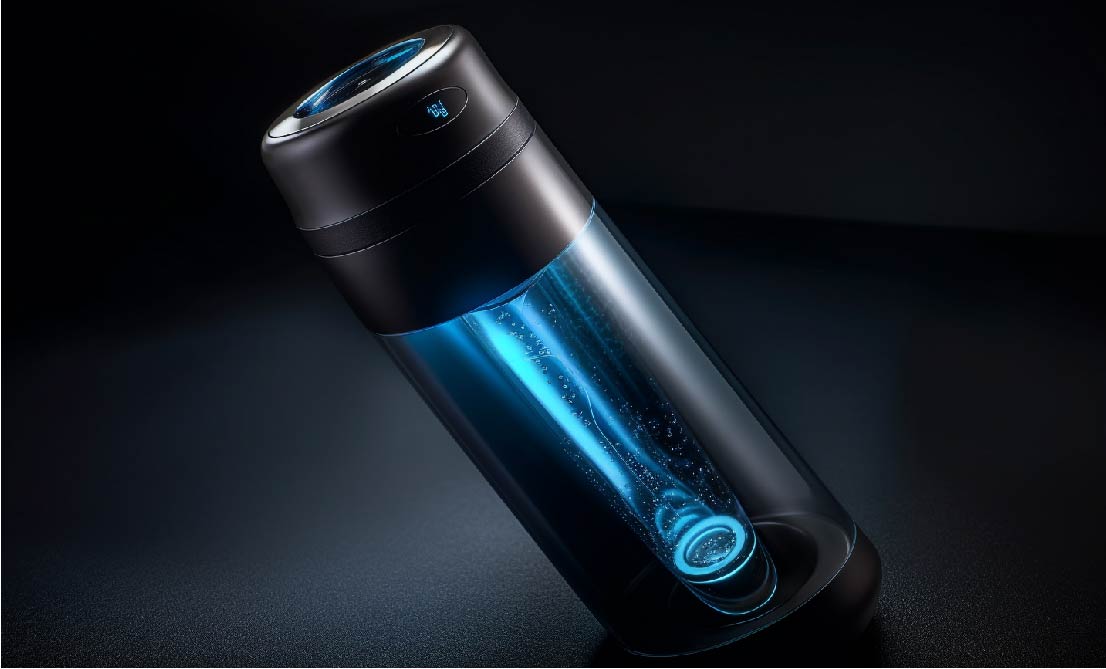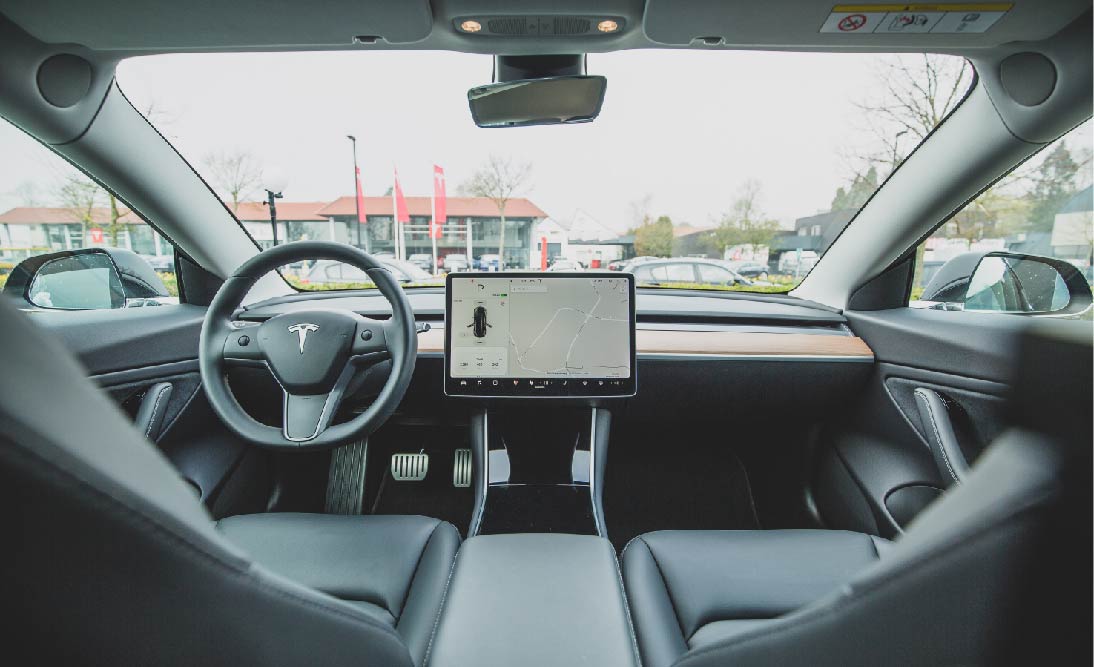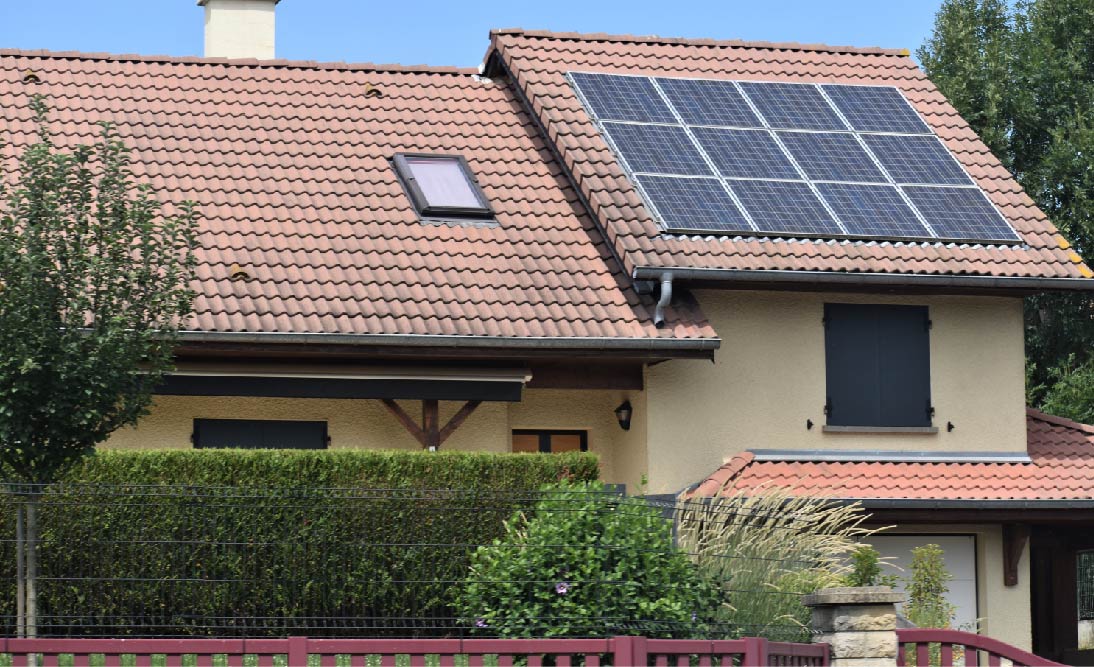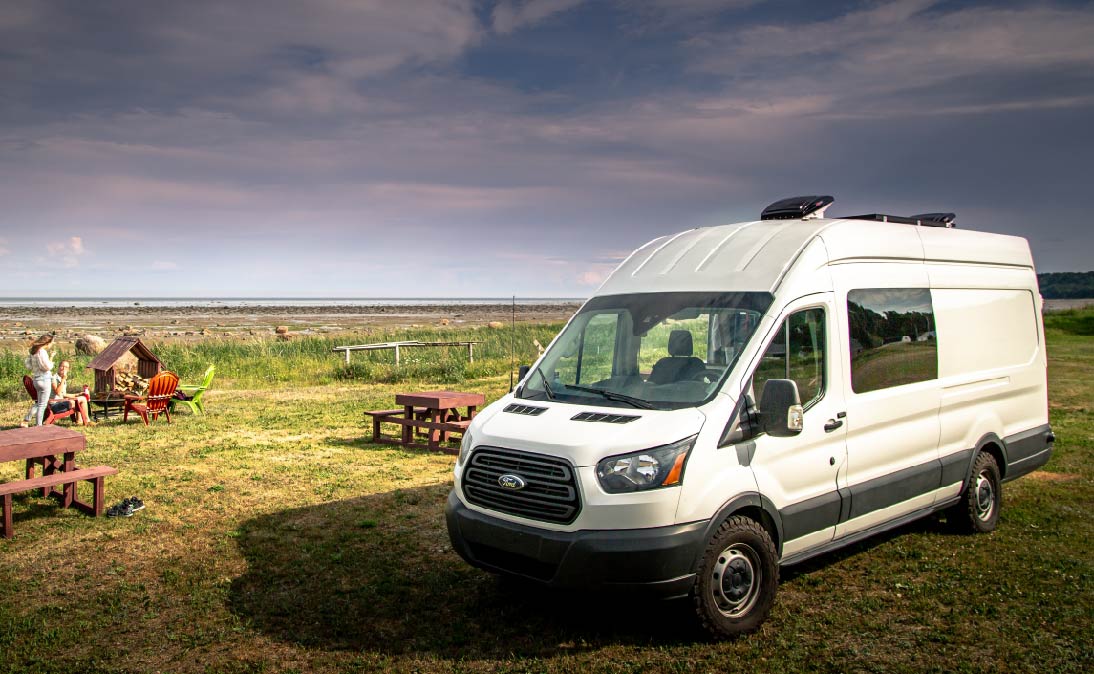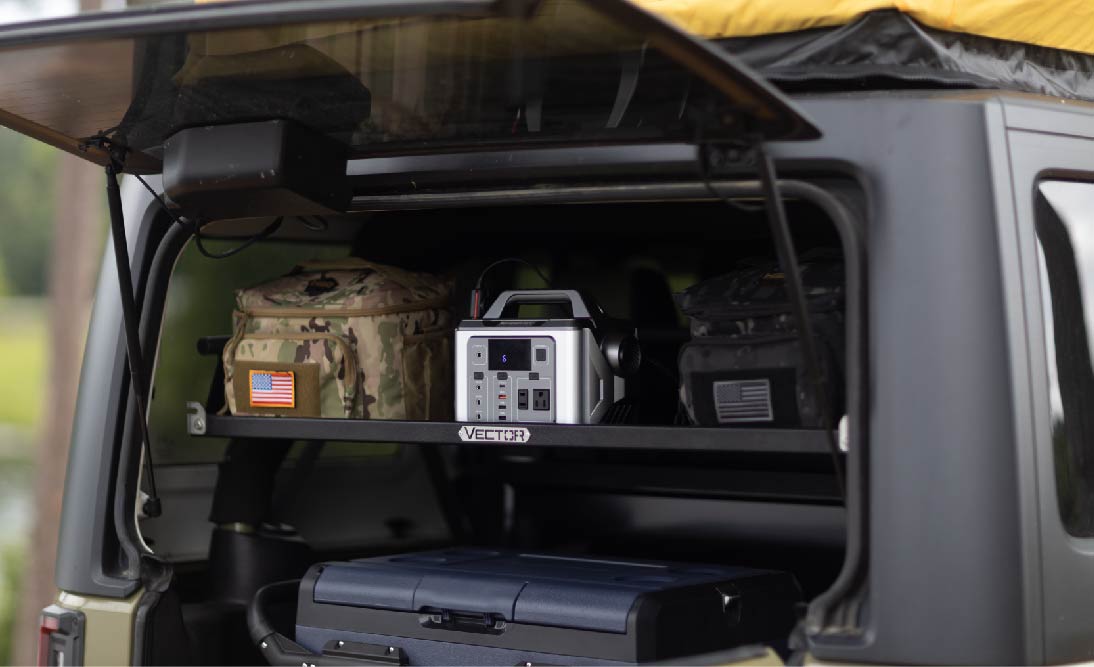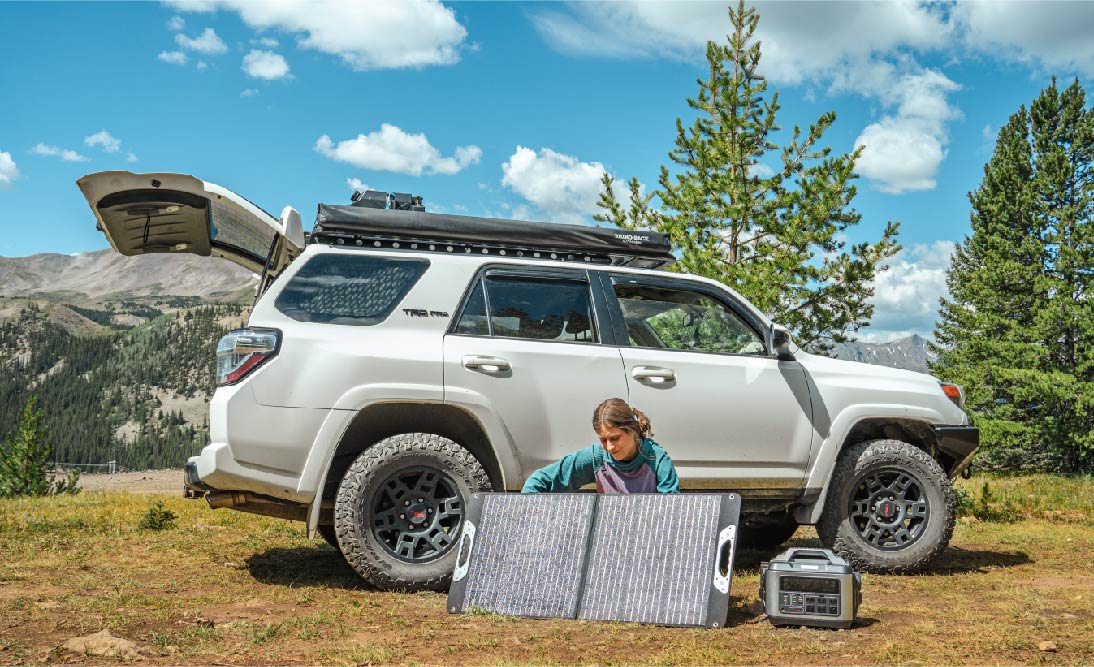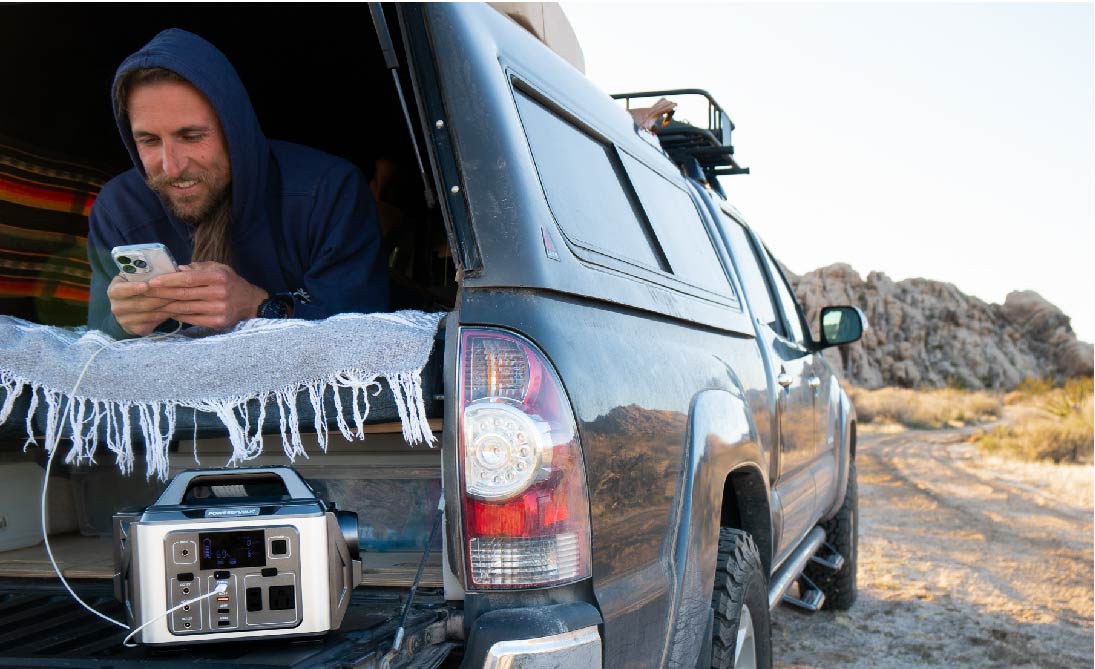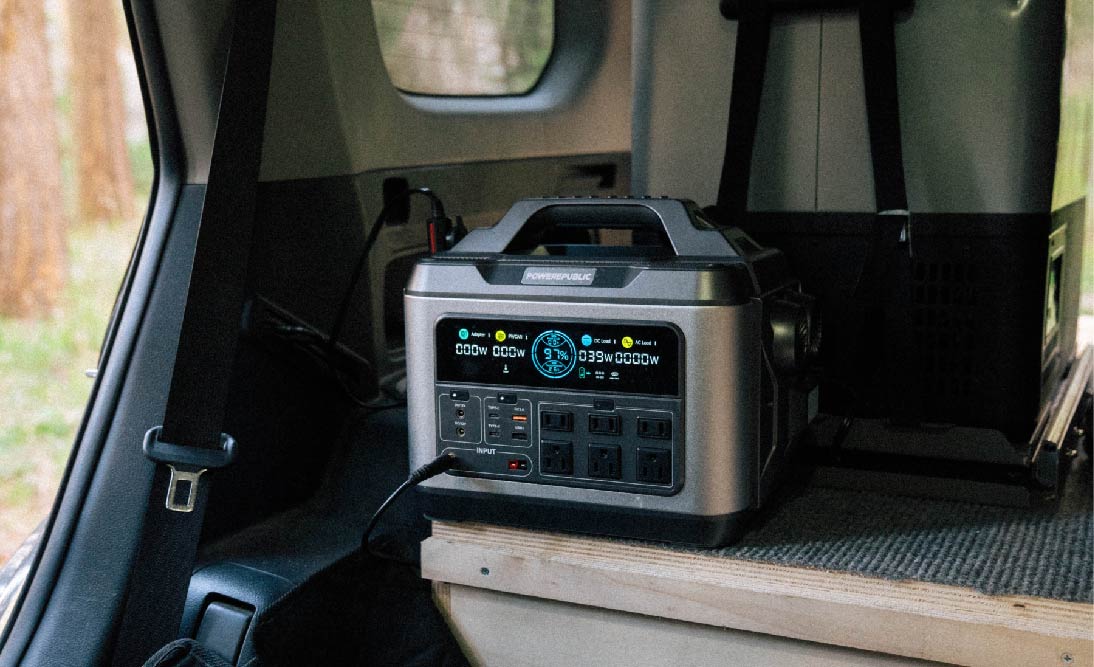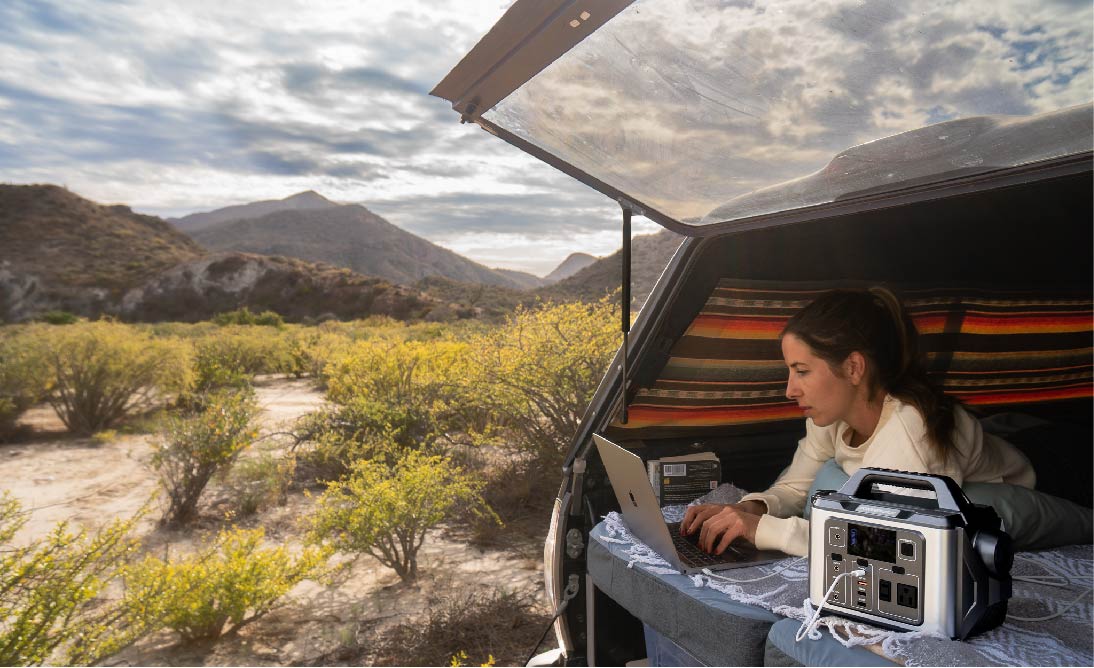Table of Contents:
-
FAQ I: How To Figure Out the Right-Sized Portable Power Station?
-
FAQ IV: Is It Possible For a Portable Power Station to Run a Refrigerator?
Embarking on a camping adventure, the last thing you want is to be left in the dark or with drained devices. The solution? The quest for the best battery pack for camping.
Navigating through the wilderness of options can be daunting, but fear not—our comprehensive guide is here to light the way. From small packs fueling smartphones to robust power stations running mini-fridges, we explore types, technologies, and applications. But the real challenge lies in choosing the perfect pack for your needs. Enter POWEREPUBLIC, a beacon in the realm of portable power. Their T306 suits light use, the T1200 tackles heavy demands, and the T2200 rises to the challenge of extended, power-hungry journeys. Join us as we delve into the power-packed world of camping essentials, ensuring your devices stay charged, lights stay on, and the great outdoors becomes your limitless playground. POWEREPUBLIC: Empowering your camping experience, one charge at a time.
Battery Packs For Camping Overview
Battery packs for camping are portable power sources designed to provide electricity for various devices and equipment while camping. These battery packs come in various sizes and capacities, fitting different camping needs and scenarios.

Here's an overview:
Types and Sizes:
-
Small Battery Packs: Designed for charging small devices like smartphones, cameras, or GPS devices. They are typically lightweight and easy to carry.
-
Medium Battery Packs: These are suitable for powering laptops, small TVs, or multiple smartphones. They strike a balance between capacity and portability.
-
Large Battery Packs: These are designed for more demanding applications, such as powering mini-fridges, electric grills, or multiple devices simultaneously. They are heavier and less portable but offer significantly more power.
Technology:
-
Most modern camping battery packs use lithium-ion or lithium-polymer technology, known for their high energy density and longevity.
-
Some models include solar charging capabilities, allowing campers to recharge the battery pack using solar panels.
Applications:
-
Device Charging: The primary use of battery packs in camping is to keep devices like smartphones, cameras, and GPS units charged.
-
Lighting: They can power LED lights or lanterns for night-time illumination.
-
Cooking Appliances: Larger battery packs can power small electric grills or portable stoves.
-
Entertainment: They can be used to power radios, small televisions, or speakers for entertainment in the outdoors.
Features to Consider:
-
Capacity: Measured in milliampere-hours (mAh) or watt-hours (Wh), indicating how much charge the battery can hold.
-
Output Options: Different USB ports (like USB-A, USB-C), DC outputs, or even AC outlets in larger models.
-
Durability: Important for outdoor use; many are designed with rugged casings and are sometimes water-resistant.
-
Weight and Portability: A key factor, especially for backpacking or when space is limited.
Safety:
-
Modern battery packs include safety features like overcharge protection, short-circuit protection, and temperature control to ensure safe use in outdoor environments.
Battery packs for camping have become essential for modern outdoor enthusiasts, providing a reliable power source to enhance the camping experience while keeping devices and equipment operational.
Are Portable Power Stations the Same as Battery Packs?
In short, portable power stations and battery packs, while similar in their basic function as portable sources of electricity, actually differ in their capacity, size, and intended use.
Both battery packs and portable power stations serve the purpose of providing power on the go, portable power stations offer more capacity and versatility, suitable for powering larger devices and for extended use. Battery packs, on the other hand, are more about convenience and portability for charging smaller devices.

Comparing Battery Packs & Portable Power Stations
Comparing battery packs and portable power stations helps in understanding their distinct features and intended uses. Here's a detailed comparison:
Capacity and Power Output:
-
Battery Packs: Typically have lower capacity, measured in milliampere-hours (mAh). They're designed for charging small devices like phones, tablets, and cameras, with capacities usually ranging from about 2,000 mAh to 20,000 mAh.
-
Portable Power Stations: Offer higher power output and greater capacity, measured in watt-hours (Wh). They can handle larger devices like laptops, CPAP machines, and even some appliances, with capacities often ranging from 100 Wh to over 1,000 Wh.
Size and Portability:
-
Battery Packs: Compact and lightweight, ideal for carrying in a backpack, handbag, or even a pocket.
-
Portable Power Stations: Larger and heavier due to their higher capacity and additional features. They are portable but typically used in situations where they don't need to be carried over long distances, like car camping or as emergency power backups.

Output Options:
-
Battery Packs: Generally offer USB ports (like USB-A, and USB-C) for charging.
-
Portable Power Stations: Provide a variety of output options including standard AC outlets, DC outputs, USB ports, and sometimes even specific ports for solar panel inputs.
Use Cases:
-
Battery Packs: Ideal for daily use, short outdoor trips, or activities where charging small electronic devices is necessary.
-
Portable Power Stations: More suitable for longer trips, camping, outdoor events, or emergency home backup where powering larger devices or multiple items at once is required.
Additional Features:
-
Battery Packs: Some may include features like fast charging, solar charging capabilities, and rugged or waterproof designs.
-
Portable Power Stations: Often come with advanced features like an integrated LED display for monitoring power usage, multiple charging methods (including solar), wireless charging pads, and sometimes even smart connectivity.
Price Range:
-
Battery Packs: Generally more affordable due to their smaller size and capacity.
-
Portable Power Stations: Pricier, reflecting their larger capacity, more diverse output options, and additional features.
Intended Audience:
-
Battery Packs: Suitable for casual users, travelers, and outdoor enthusiasts who need to charge personal electronic devices.
-
Portable Power Stations: Aimed at users needing reliable power for multiple or high-energy-consuming devices, like photographers, campers in remote locations, or people needing emergency home backup power.
In essence, while both battery packs and portable power stations serve as sources of portable power, battery packs are more about compact, on-the-go charging for small devices, and portable power stations are about versatile, high-capacity power for a wider range of devices and longer usage.
How To Choose The Best Battery Packs for Camping?
Choosing the best battery packs for camping involves considering several key factors based on your specific needs. Here's a guide with examples and calculations:
1. Determine Your Power Needs
-
List Your Devices: Identify what devices you'll be taking (e.g., smartphone, camera, GPS, etc.).
-
Battery Capacity of Devices: Note the battery capacity of each device (usually in mAh). For example, a smartphone might have a 3,000 mAh battery, and a camera might have a 1,000 mAh battery.
2. Calculate Total Energy Requirement
-
Total Consumption: Add the capacities of all devices you plan to charge. If you have a smartphone (3,000 mAh) and a camera (1,000 mAh), the total is 4,000 mAh.
-
Days of Camping: Multiply this by the number of days you'll be away. For a 3-day trip, you need at least 12,000 mAh (4,000 mAh * 3 days).
3. Consider Efficiency Loss
-
Charging is not 100% efficient. Assume about 70-80% efficiency.
-
Adjust your requirement accordingly: 12,000 mAh / 0.7 (70% efficiency)=17,000 mAh.
4. Look for Suitable Battery Packs
-
Capacity: Find a battery pack that meets or exceeds your adjusted requirement. In this case, a pack with at least 17,000 mAh.
-
Output Voltage: Ensure the output voltage matches your device's charging requirements (usually 5V for USB-charged devices).
5. Additional Features
-
Multiple Ports: If charging several devices simultaneously, look for multiple outputs.
-
Solar Charging: For extended trips, consider a solar charging option.
-
Durability: Water-resistant and rugged designs are beneficial for outdoor use.
-
Weight and Size: Prefer a lightweight and compact design for easy packing.
6. Examples
-
For Light Use: A 20,000 mAh battery pack can comfortably charge a smartphone and a camera over a 3-day trip.
-
For Heavy Use: If you're also charging tablets, portable speakers, or using devices extensively, consider a larger capacity, like 50,000 mAh.
7. Brands and Models
-
Research and compare different brands and models. Look for ones with good reviews in outdoor and camping communities.

Section Conclusion
The best battery packs for camping depend on your specific power needs, the duration of your trip, and the conditions you expect to encounter. Make sure to do the calculations based on your devices and consider the efficiency loss during charging. Balance capacity with portability, and don't forget to look for durable designs that can withstand outdoor conditions.
Best Battery Packs for Camping: POWEREPUBLIC Models
Based on the section above, we know that:
-
For Light Use: A 20,000 mAh battery pack, such as the POWEREPUBLIC T306, can comfortably charge a smartphone and a camera over a 3-day trip.
-
For Heavy Use: If you're charging tablets, portable speakers, or using devices extensively, consider a larger capacity, like 50,000 mAh. In this case, the POWEREPUBLIC T1200 would be suitable.
-
For Extended Heavy Use: The POWEREPUBLIC T2200 is recommended.

To better understand and compare these options, refer to the table below:
|
Features/Models |
|||
|
Capacity(Wh) |
296Wh |
1110Wh |
2240Wh |
|
Battery Capacity(mAh) |
20,000mAh |
50,000mAh |
100,000mAh |
|
Running Power |
300W |
1200W |
2200W |
|
Surge Power |
600W |
2600W |
4500W |
|
Battery Type |
Lithium-Ion |
Lithium-Ion |
LiFePO4 |
|
Output Ports |
10 |
13 |
15 |
|
Charging Methods |
AC Adapter, Solar Panel, Car Charger |
AC Adapter, Solar Panel, Car Charger |
AC Adapter, Solar Panel, Car Charger |
|
Weight |
9.2Ibs/4Kg |
31Ibs/14Kg |
64Ibs/29Kg |
|
Dimensions(Inch) |
11.2*6.1*8.0 |
14.3*9.3*10.6 |
18.3*11.8*12.2 |
|
Suitable For |
Charging Camping Essential Devices |
Larger Camping Appliances |
Home Appliances |
|
Brand Rating |
Check Out POWEREPUBLIC’S Rating on Trustpilot(4.5/5). |
||
|
Est.Running Time(h) |
Est.Running Time(h)=Capacity(Wh) * 0.85 / Power of the item(W) |
||
|
LED Light Bulb (50W) |
5 hours |
18.5 hours |
38 hours |
|
Smartphone Charger (60W) |
4 hours |
15.5 hours |
31.5 hours |
|
Wireless Router (70W) |
3.5 hours |
13.5 hours |
27 hours |
|
TV(100W) |
2.5 hours |
9.5 hours |
19 hours |
|
Blender (300W) |
0.8 hours |
3 hours |
6.3 hours |
|
Microwave (800W) |
Not Applicable |
1.2 hours |
2.4 hours |
|
Coffee Maker (900W) |
Not Applicable |
1.1 hours |
2.1 hours |
|
Washing Machine (1000W) |
Not Applicable |
1 hour |
2 hours |
|
Toaster Oven (1500W) |
Not Applicable |
Not Applicable |
1.3 hours |
|
Portable Heater (2000W) |
Not Applicable |
Not Applicable |
1 hour |
Note That:
-
For precise wattage information, refer to the specific user manuals of each device.
-
The estimated running time assumes that only one device is being powered at a time and that the models are fully charged.
-
To estimate more accurately, it is crucial to take into account factors such as the current battery level of the models, their continuous and peak power output, the number of devices you plan to power simultaneously, and the overall power requirements.
FAQ I: How To Figure Out the Right-Sized Portable Power Station?
Answer: To determine the right size for a portable power station, you need to calculate the total wattage of the devices you plan to power.
Example:
-
If you want to power a smartphone (5W), a laptop (60W), and a lamp (10W), the total wattage is 5W + 60W + 10W = 75W.Choose a power station with a higher output than your total requirement.
-
For continuous use, consider the power station's capacity (mAh or Wh). If a power station has a capacity of 500Wh, it can theoretically power your devices for 500Wh/75W=67 hours.

FAQ II: How To Charge a Portable Power Station?
Answer: Portable power stations can be charged in several ways, including:
-
AC Outlet: Plug it into a wall outlet. If your station has a capacity of 500Wh and charges at 100W, it will take approximately 5 hours to charge fully.
-
Solar Panels: Ideal for camping. Charging time depends on panel capacity and sunlight. A 100W panel under ideal conditions might take about 5-6 hours to charge a 500Wh station.
-
Car Charger: Use your vehicle’s cigarette lighter. This method is slower; for a 500Wh station, it might take 8-10 hours.

FAQ III: How Does a Portable Power Station Work?
Answer: A portable power station stores electrical energy in a built-in high-capacity battery, typically lithium-ion or LiFePO4 batteries. It converts this stored DC power into AC power, allowing you to run AC appliances. It also has built-in USB ports and DC outputs for smaller devices.
Example: If you have a 500Wh power station, it can power a device that consumes 50W for 500Wh/50W=10 hours.

FAQ IV: Is It Possible For a Portable Power Station to Run a Refrigerator?
Answer: Yes, but it depends on the power station’s capacity and the refrigerator's power requirements.
Example: A typical refrigerator needs about 120W-200W. For a 500Wh power station, it can run a 150W fridge for approximately 500Wh/150w=3.33 hours. However, remember that refrigerators have a start-up surge that can be 2-3 times the running wattage, so a power station with a high peak power capability is necessary.

Final Thoughts
For camping enthusiasts seeking reliable power solutions, identifying the best battery packs is crucial. POWEREPUBLIC emerges as an excellent option, offering products like the T306 for light use, the T1200 for heavy use, and the T2200 for more demanding needs. These models showcase a balance between portability, power capacity, and versatility, catering to various camping scenarios.
When choosing, consider your power needs, trip duration, and specific requirements like device charging or running larger appliances. POWEREPUBLIC's range, with diverse models and capacities, ensures that there's a suitable option for every camper. Their products stand out for their robust design, multiple charging options, and efficient power management, making them a top choice for outdoor adventures.
In essence, for those seeking the best battery packs for camping, POWEREPUBLIC offers reliable, high-quality solutions to keep your devices powered and enhance your camping experience
